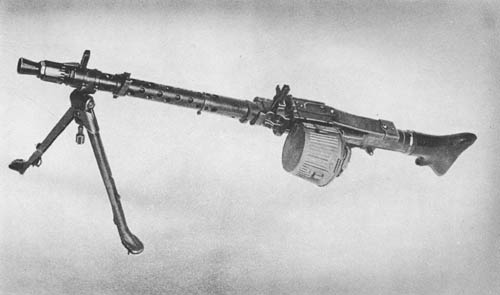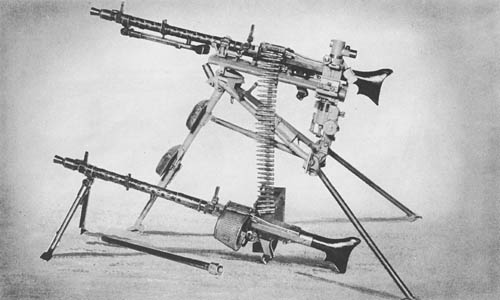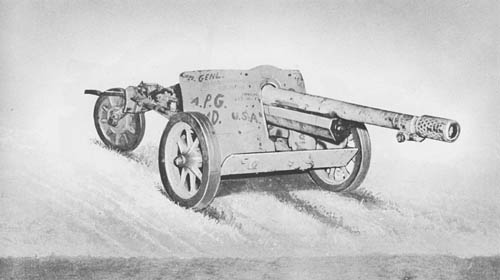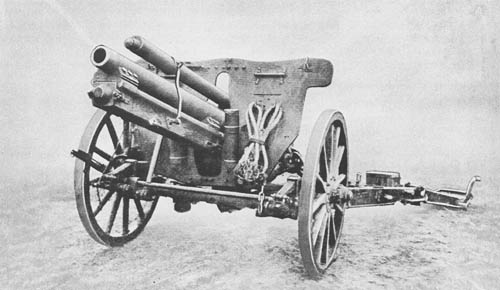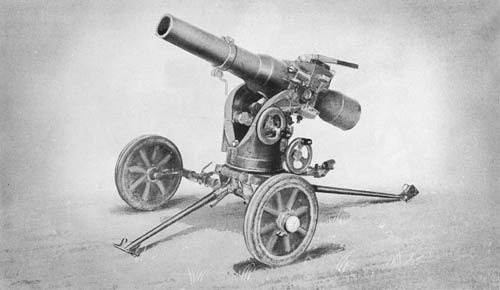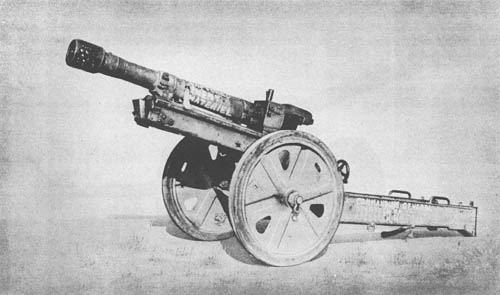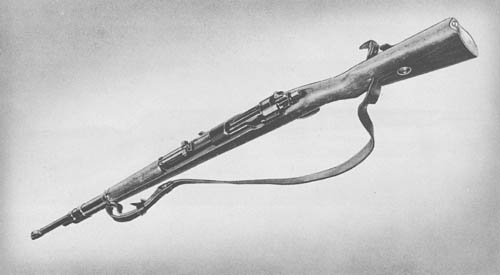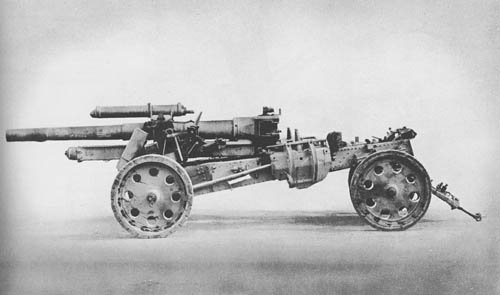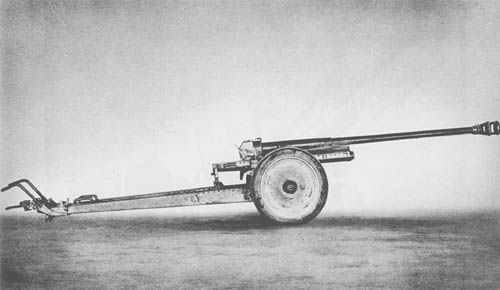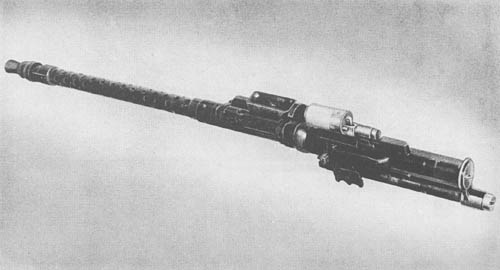
The German 7.92 mm aircraft machine gun, M.G. 17, is an air-cooled, recoil-operated, gas-assisted, belt-fed, pneumatically charged, fixed weapon fired electrically by solenoid. It differs from the M.G. 15 in that it fires from a closed bolt. Three types of links have been found used with the belt feed of this weapon: sectionally disintegrating, fully disintegrating, and nondisintegrating. The gun, which has a fixed mount, is well constructed with excellent machining throughout.
All parts are of steel with the exception of the rear buffer housing which is of cast dural with an anodized finish. The rest of the gun is covered with a good parkerized finish. The barrel is connected to the barrel extension by an interrupted thread type fastening. The bolt is of the Solothurn rotating type and operates on small steel rollers.
The M.G. 17 is used in many types of German aircraft, and is stationed in various positions so that it may be fired unsynchronized or synchronized through the propellor arc by solenoid.
SPECIFICATIONS
| Caliber | 7.92 mm (.312 in.) | |
| Weight | 27 lb., 11 oz. | |
| Length | 47 3/4 ins. | |
| Length of barrel | 23 5/8 ins. | |
| Muzzle velocity | 2,800 f/s | |
| Rate of fire | 1,000 rds./min. (synchronized) 1,100 rds./min. (unsynchronized) | |
| Operation | Recoil, gas assisted | |
| Fire | Automatic only | |
| Rifling | 37° uniform right-hand twist, 1 turn in 10 ins. |
German: p. 220
